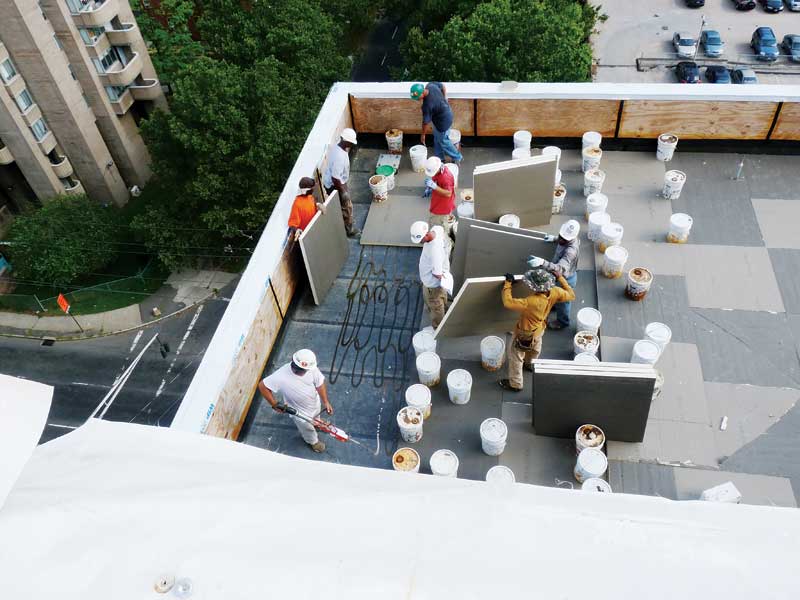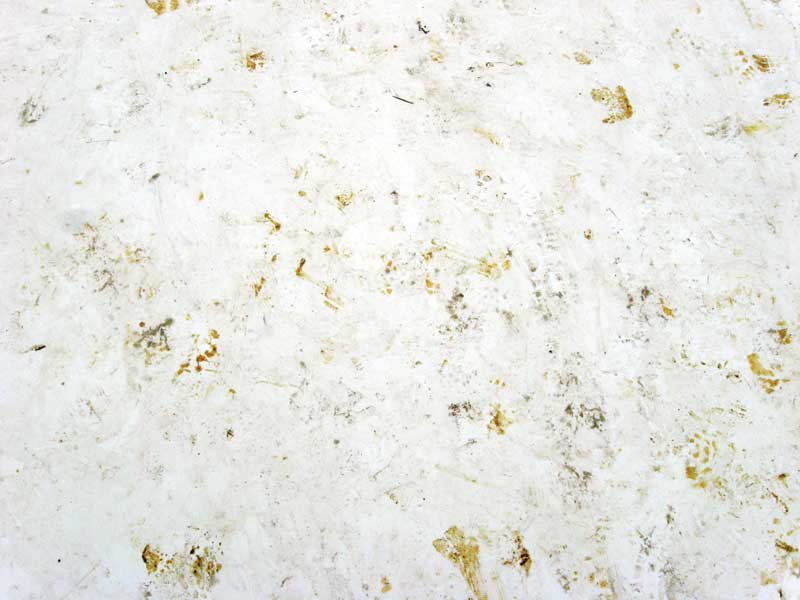
The Solar Reflectance Index (SRI) is a combined measure of solar reflectance and thermal emittance, which rates surfaces from 0 (a standard black surface) to 100 (a reflective white roof). IECC and ASHRAE 90.1-2010 stipulate a minimum SRI of 82 at initial installation and 64 for a three-year-aged roof. (SRI is a measure of a roof’s ability to reject solar heat, and it may be used in addition to—or in lieu of—solar reflectance and thermal emittance when specifying roof assemblies. For example, ASHRAE 90.1 defines a cool roof as having a minimum solar reflectance of 0.70, a minimum thermal emittance of 0.75, or a minimum SRI of 82.)
The roofing types that best suit these qualifications are:
- single-ply systems, composed of either thermoplastic polyolefin (TPO) or white ethylene propylene diene monomer (EPDM);
- modified-bitumen roofs (MBRs) with reflective granular cap sheets, or
- fluid-applied reflective assemblies. (A ballasted membrane with white gravel is not typically considered a true cool roof assembly, in that the gravel can move, exposing the dark bituminous roof membrane. Moreover, white gravel is not the same as granules that have been specifically engineered and tested to be highly reflective, not just light in color.)
Of these, the single-ply systems tend to offer the higher reflectance values, as the membranes are uniformly light in color, with lightweight material that does not hold heat. However, single-ply systems lack redundancy and can be prone to seam failure if not correctly installed, so they tend to be less durable and resilient than their multiple-ply counterparts. Although MBR systems do use dark-colored, heat-absorbing bituminous material as the base layers, the granular reflective cap sheet disperses and reflects the majority of solar radiation, preventing heat energy from reaching the layers below.

Single-ply systems tend to be less expensive than MBR assemblies, but installation may necessitate contractors with special training and equipment, which can add to the total cost. For modified-bitumen roofs with reflective cap sheets, the material and installation costs tend to be comparable to those of standard modified bitumen assemblies. (Given that some degree of specialized training and equipment is required for all types of roof installations, single-ply systems in general tend to be less expensive than MBR assemblies even when installation costs are taken into consideration. That said, each system and situation is different. Although the initial cost of a single-ply assembly may be less than that of an MBR system, the redundancy, self-healing properties, longevity, and lower maintenance demands of modified bitumen assemblies tend to make them the more cost-effective option in the long term.) Fluid-applied assemblies are monolithic, which eliminates joints and laps in the membrane and so minimizes potential water entry points. However, of the three types of roofing considered above, fluid-applied systems are typically the most expensive.
Other options for roof coverings with a high solar reflectance index include inverted roof membrane assemblies (IRMA) in which the roof membrane is covered with insulation and reflective pavers, or metal panels with high-SRI finishes. An architect or engineer should advise on the compatibility and effectiveness of any rehabilitation options, as not all products are appropriate for all buildings.





What a nice overview of these issues. Vegetative/green roofs are a great amenity for inhabitants and building owners and EPDM membrane is commonly used as the roof cover. A small correction … prior to the 2010 edition of ASHRAE 90.1, there was no requirement for roof reflectivity. That provision was added for the 2010 edition in Climate Zones 1-3. Your statement of “…in previous editions, reflective roof assemblies were the standard, irrespective of geographic region” is incorrect.
Green roofs have become incredibly popular and are being designed and installed at an incredibly rapid pace. As an addition to the “Waterproof design” in this article, I would strongly recommend installing a conductive mesh beneath the waterproof membrane. This will now, always allow for an Electronic Leak Detection to be performed after completion of such elaborate vegetated roofs and/or any other amenity space idea. My company specializes in both high and low voltage testing (leak/integrity), Gaussen’s “Real Time Leak Detection and Alert Systems” (24/7 live monitoring) as well as installing the conductive mesh.
The recommendation to perform a leak detection prior to installing the green roof components is spot on and will only save time, money and frustration. You can find our specification for Electronic Leak Detection at http://atlanticleak.com/eld-specification/.
Great article!!